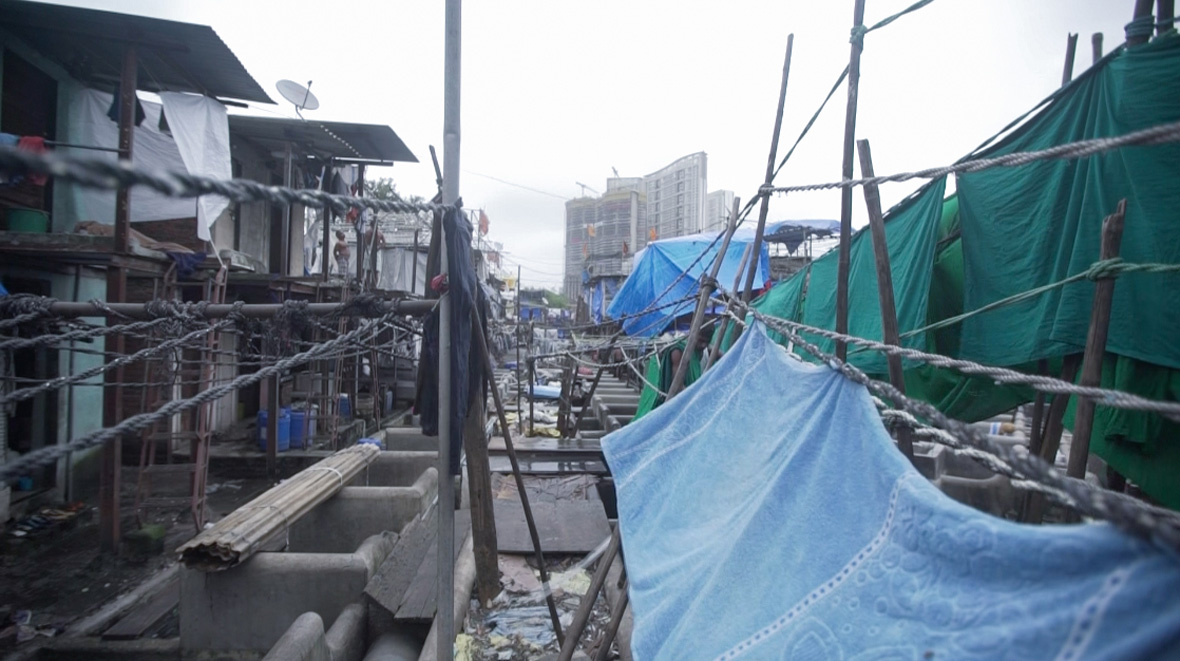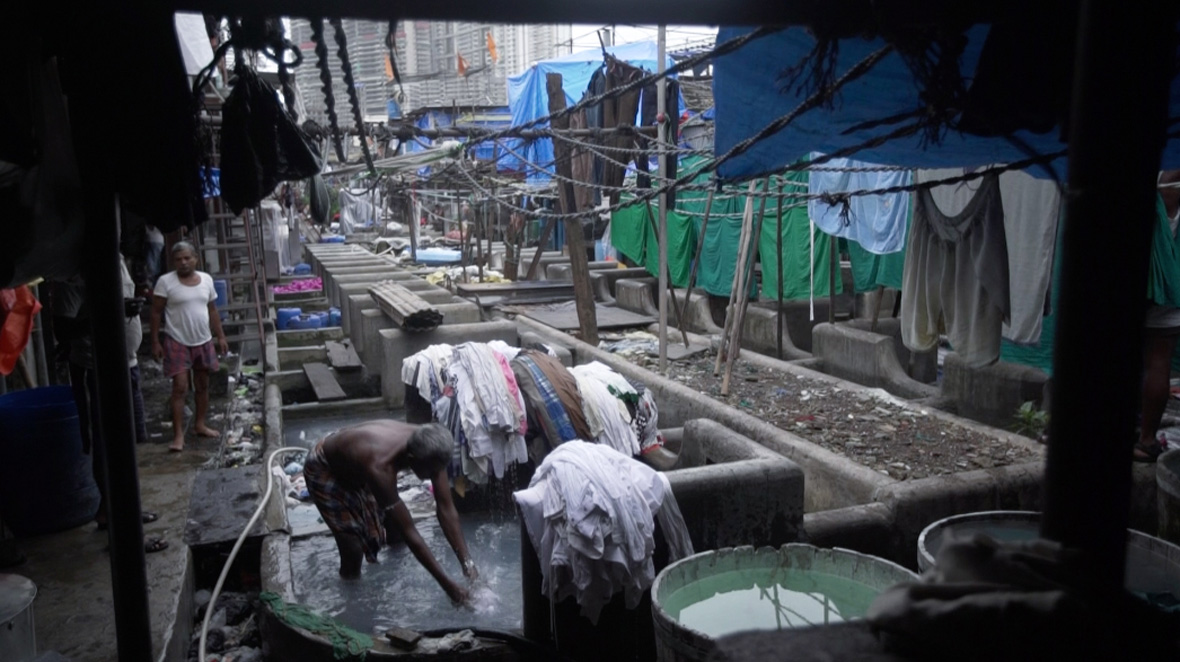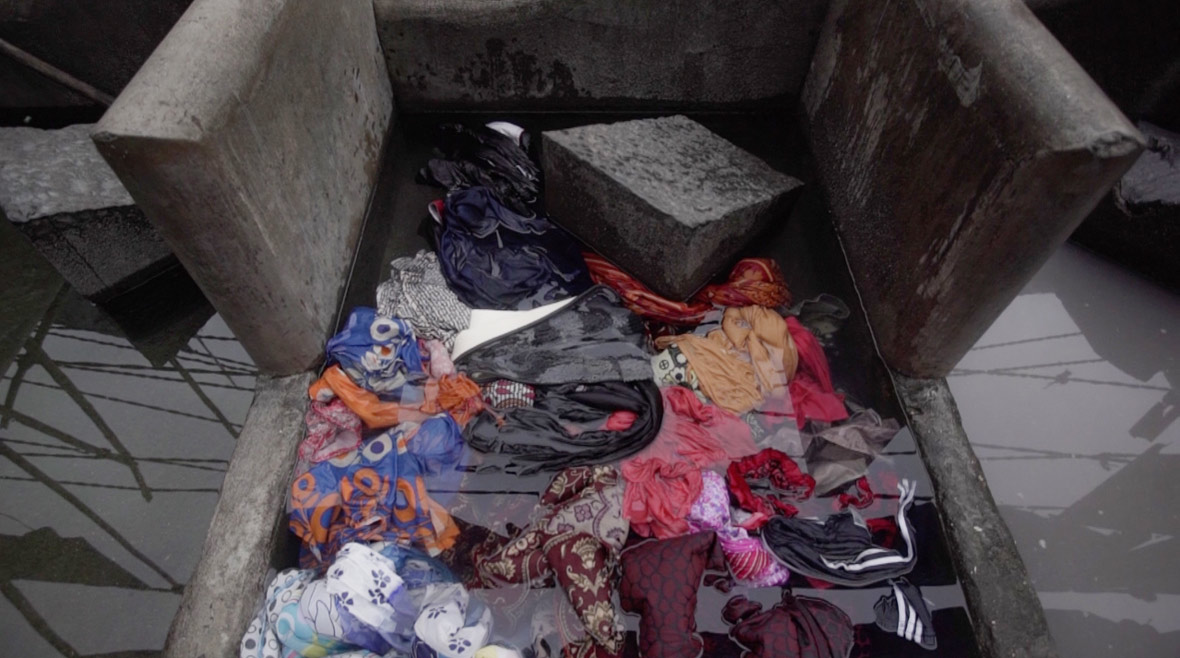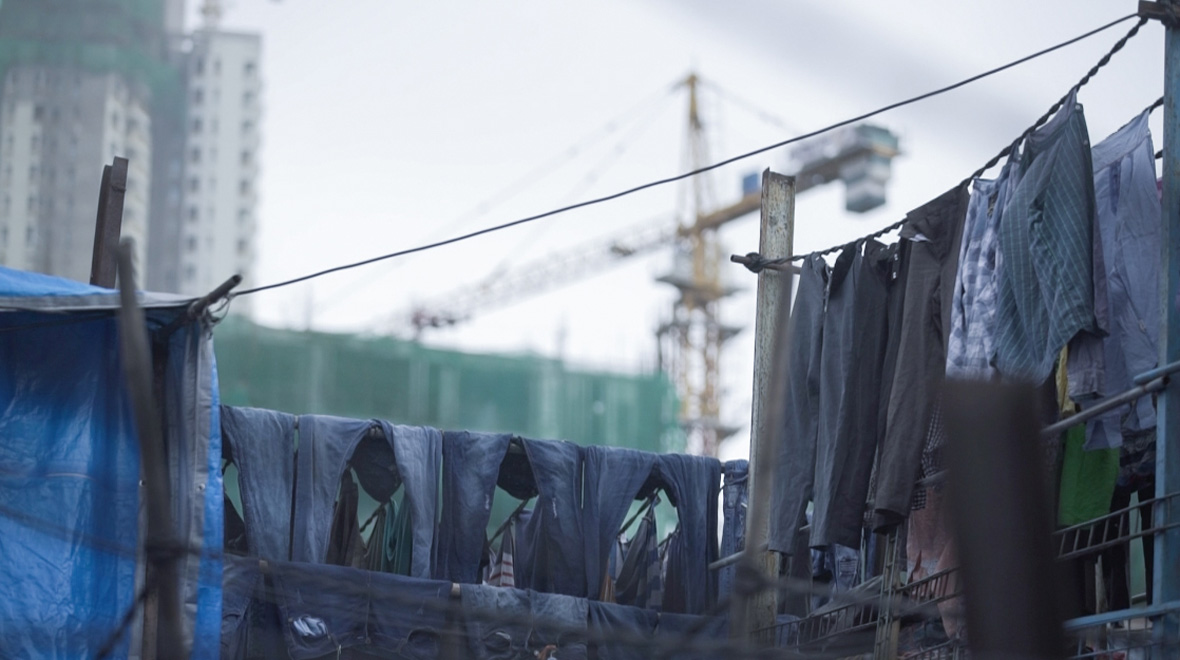

Omkar Phatak, captures the essence of the Mahalaxmi Dhobi Ghat amidst a rapidly developing Mumbai
The Mahalaxmi Dhobi Ghat has been dubbed the largest open-air laundromat in the world. Built in Mumbai during the 1890s to cater the laundry needs of the British and Parsi population, Dhobi Ghat has stood the test of time and remains in operation even after 120 years.
 The wash pens are comprised of over 700 interlocked grids, and within the patterned geometry of these concrete enclosures, an army of men and women are hard at work, washing away; above them, an array of colored fabrics are hung out to dry, gently swaying to the rhythm of the wind.
The wash pens are comprised of over 700 interlocked grids, and within the patterned geometry of these concrete enclosures, an army of men and women are hard at work, washing away; above them, an array of colored fabrics are hung out to dry, gently swaying to the rhythm of the wind.
 Washing machines are in common throughout Mumbai in modern times but even today, over 100,000 garments are still hand washed in Dhobi Ghat every day. From government services, to private businesses, clothes are ferried in throughout the day from different locations across the city. To be soaked, cleaned, slapped on flogging stones, dried, and ironed before being delivered back to the respective businesses and households.
Washing machines are in common throughout Mumbai in modern times but even today, over 100,000 garments are still hand washed in Dhobi Ghat every day. From government services, to private businesses, clothes are ferried in throughout the day from different locations across the city. To be soaked, cleaned, slapped on flogging stones, dried, and ironed before being delivered back to the respective businesses and households.
 Despite the opportunities and historical significance of Dhobi Ghat, the plot of land that it sits on is regarded as prime real estate. In a rapidly developing Mumbai, many opportunists see the aging neighborhood as nothing more than a nuisance that’s preventing good money to be made.
Despite the opportunities and historical significance of Dhobi Ghat, the plot of land that it sits on is regarded as prime real estate. In a rapidly developing Mumbai, many opportunists see the aging neighborhood as nothing more than a nuisance that’s preventing good money to be made.
 The wash pens of Dhobi Ghat is protected as a heritage site, but the surrounding neighborhood isn’t as fortunate. Over 200 families are still living in Dhobi Ghat, but certain areas of the neighborhood have already been demolished. “This is the 3rd generation of my family living here,” says Bala, a 20-year-old dhobi living in the neighborhood. “I work here in the morning and then go to college later in the day. This place has helped my family sustain a livelihood.”
The wash pens of Dhobi Ghat is protected as a heritage site, but the surrounding neighborhood isn’t as fortunate. Over 200 families are still living in Dhobi Ghat, but certain areas of the neighborhood have already been demolished. “This is the 3rd generation of my family living here,” says Bala, a 20-year-old dhobi living in the neighborhood. “I work here in the morning and then go to college later in the day. This place has helped my family sustain a livelihood.”
One of the best vantage points of Dhobi Ghat is from an overpass directly above the wash pens where you can observe the washer-men below, all moving with speed and purpose like a beautiful, choreographed dance.
However, from the same vantage point, Mumbai’s growing skyline looms in the distance, casting a solemn gaze at the dilapidated housing before it, almost as if willing Dhobi Ghat to succumb to the forces of modernization. As greed and modernization continue encroaching on traditional ways of life, those still living in Dhobi Ghat face an uncertain future.
This story first appeared on Neocha-Culture and Creativity In Asia